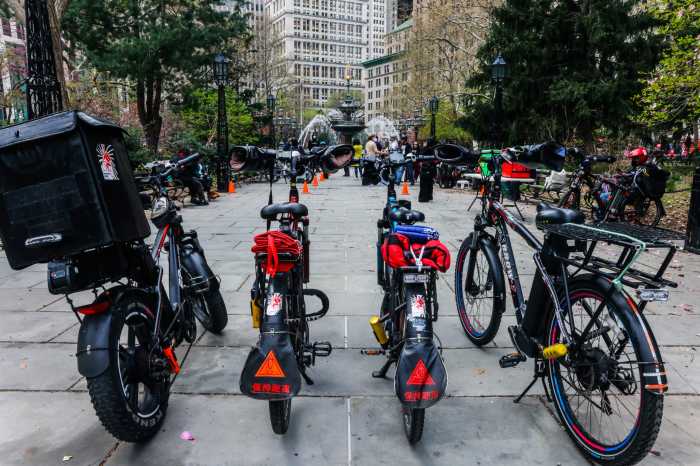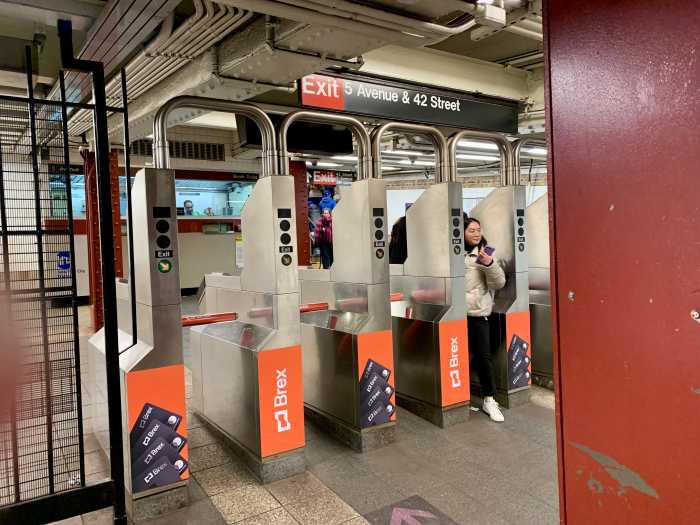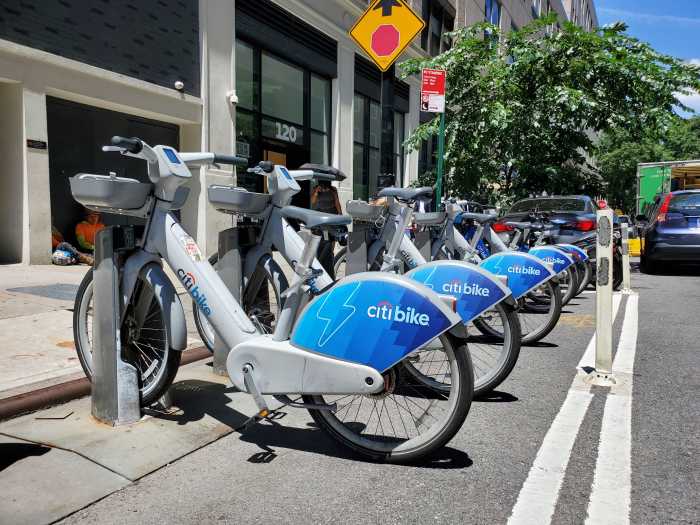
Pressured to redesign dangerous city streets more quickly, the city said such work takes time.
Transportation Commissioner Polly Trottenberg promised that a “detailed plan” will be unveiled in the coming weeks for a safety overhaul of the Ninth Street corridor in Park Slope, where two young children were killed Monday when a driver ran a red light at the intersection with Fifth Avenue.
But advocates and City Council members have called for the city to more quickly deliver such projects — which can include painted curb extensions, pedestrian islands and protected bike lanes — whenever it repaves a street.
At a City Council hearing on Thursday afternoon, Trottenberg said she “agreed with the spirit” of the idea, but said it wasn’t possible, and that it could conflict with the city’s data-driven approach of tackling the most dangerous streets and intersections first.
“Full-scale street safety redesigns . . . those are projects that we do based on Vision Zero priorities. We’re looking at crash data; we’re working with local communities, elected officials, community boards, advocates. And those take time. They have to work through the community board process. Sometimes that work has to be carefully engineered,” Trottenberg said. “It’s different than sort of resurfacing the street.”
Trottenberg went on to say that some repaving takes place in areas that are “almost like highways.”
“They’re not even places where people are walking or where anyone’s biking,” she said.
The repave and redesign proposal, outlined by Transportation Alternatives in the Vision Zero Design Standard manual, has gained the support of 26 Council members — a majority among the 51-member body. Both Brooklyn Councilman Stephen Levin and Manhattan Councilman Ydanis Rodriguez questioned Trottenberg on the concept at Thursday’s hearing.
Levin asked if more DOT funding would help the city redesign more projects.
“Funding has not really been our major limiting factor,” Trottenberg said. “The limiting factor has been we’re an agency of only so many people with so much bandwidth. There’s only so many nights we can go before the community boards. There’s only so much the whole city can sort of absorb in terms of disruption.”
The “detailed plan” on a Ninth Street redesign, that Trottenberg said will be publicly unveiled in the coming weeks, will include protected bike lanes and other pedestrian-friendly fixes.
Paul Steely White, executive director of Transportation Alternatives, said that while the Ninth Street redesign was “good news,” the city’s broader response is not enough.
“Ninth Street really wasn’t on their radar because it doesn’t fit their criteria for an unsafe street,” said White. “There’s a whole menu of safety measures that the city now knows work, but they are grossly under applied. So really they need to figure out how to systematically upgrade the majority of streets in New York City, because the majority of the streets in New York City don’t have these safety measures yet.”
Last year, Trottenberg noted, the city completed a record 114 safety improvement projects — up 138 percent from pre-Vision Zero era’s five-year average. But she said it wasn’t a numbers game.
“I want it to be quality as well as quantity,” she said. “I never want to discourage my staff from taking on a big, hairy, complicated project like Queens Boulevard because it will take up so much resources that it might lower our numbers.”




































